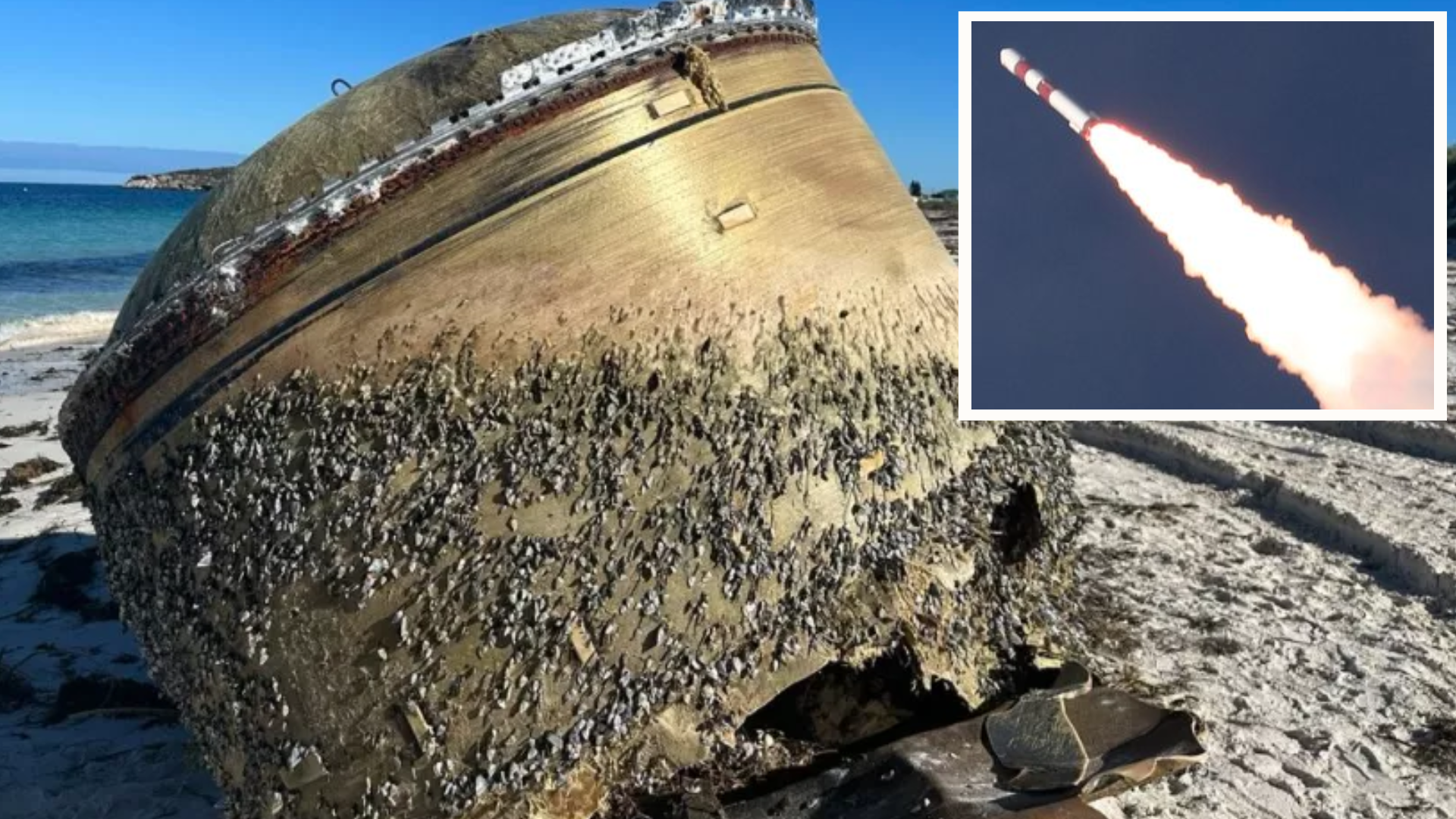Mystery of space debris found on Australian beach may be solved
The Australian Space Agency has identified a culprit for the chunk of space junk that washed up in Western Austrailia.

The mystery of a huge piece of "space junk" that washed up on a beach in Western Australia may have finally been solved.
The Australian Space Agency first issued a statement about the cylindrical metal debris on July 17. On Monday (July 31), the agency said that the mysterious wreckage is likely a section of the third stage of a Polar Satellite Launch Vehicle (PSLV).
"We have concluded the object located on a beach near Jurien Bay in Western Australia is most likely debris from an expended third-stage of a Polar Satellite Launch Vehicle (PSLV)," the Australian Space Agency tweeted. PSLV rockets are operated by Indian Space Research Organisation (ISRO), which is now working with the Australian Space Agency to determine what will now happen with the debris.
Related: Kessler Syndrome and the space debris problem
An IRSO official told the Indian Express that the debris was likely a part of a PSLV rocket that launched on May 29, 2023 carrying a navigation satellite for the IRNSS constellation. "That satellite was launched in the southward direction. It is possible that one of the parts of the rocket did not burn completely while dropping back into the atmosphere and fell into the ocean," the official added. "It could later have been swept towards the Australian shore."
PSLV rockets are expendable medium-launch vehicles first flown in 1993 that were predominantly used to launch Indian Remote Sensing (IRS) satellites into a sun-synchronous orbit at an altitude of around 370 miles (600 km) over Earth. The fact that PSLVs can launch multiple satellites and are capable of carrying 3,860 pounds (1,750 kg) of payload during one journey has made them a popular choice for "ride-share"-type space missions.
As of July 17, when the first picture of the debris on Jurien Bay was released, PSLVs had flown 57 missions. The 58th mission for the vehicle occurred on July 29 after the debris had washed up and as the Australian Space Agency was conducting its investigation. While it's not currently known exactly which PSLV mission the debris came from, it certainly wasn't the latest flight of the rocket.
Get the Space.com Newsletter
Breaking space news, the latest updates on rocket launches, skywatching events and more!
The ESA also estimates that large pieces of space junk fall back to Earth at a rate of around one per week, this means while these reentries have yet to cause major property damage or personal injury, the space agency takes this risk and the concept of space sustainability seriously, as does the Australian Space Agency.
The fact this debris was able to wash up on a public beach highlights the growing problem of space junk. The European Space Agency (ESA) estimates that there are currently around 10,000 spacecraft in orbit around Earth and that at least 2,000 of these are "dead," ESA officials said in a July 19 press conference.
Join our Space Forums to keep talking space on the latest missions, night sky and more! And if you have a news tip, correction or comment, let us know at: community@space.com.

Robert Lea is a science journalist in the U.K. whose articles have been published in Physics World, New Scientist, Astronomy Magazine, All About Space, Newsweek and ZME Science. He also writes about science communication for Elsevier and the European Journal of Physics. Rob holds a bachelor of science degree in physics and astronomy from the U.K.’s Open University. Follow him on Twitter @sciencef1rst.









